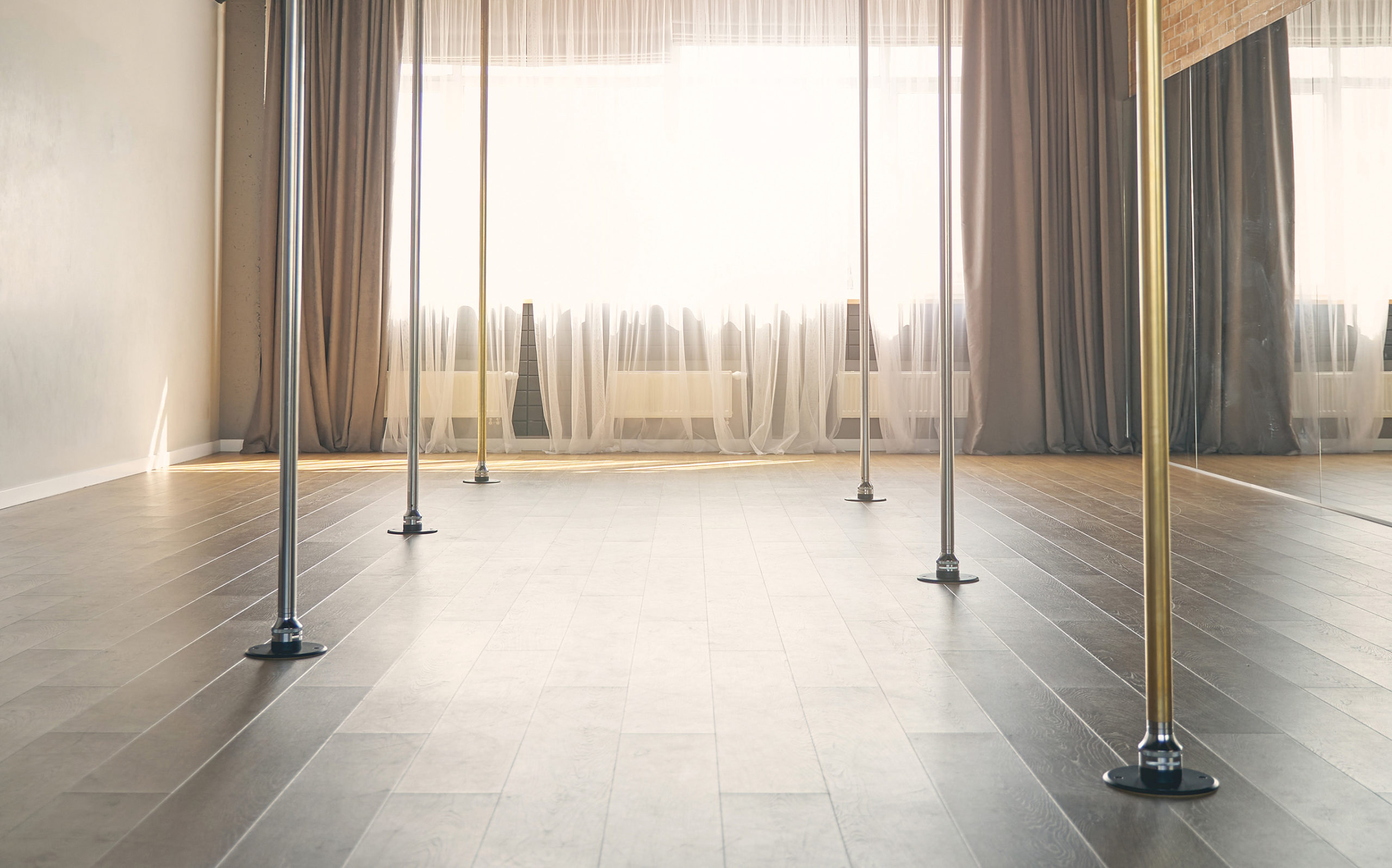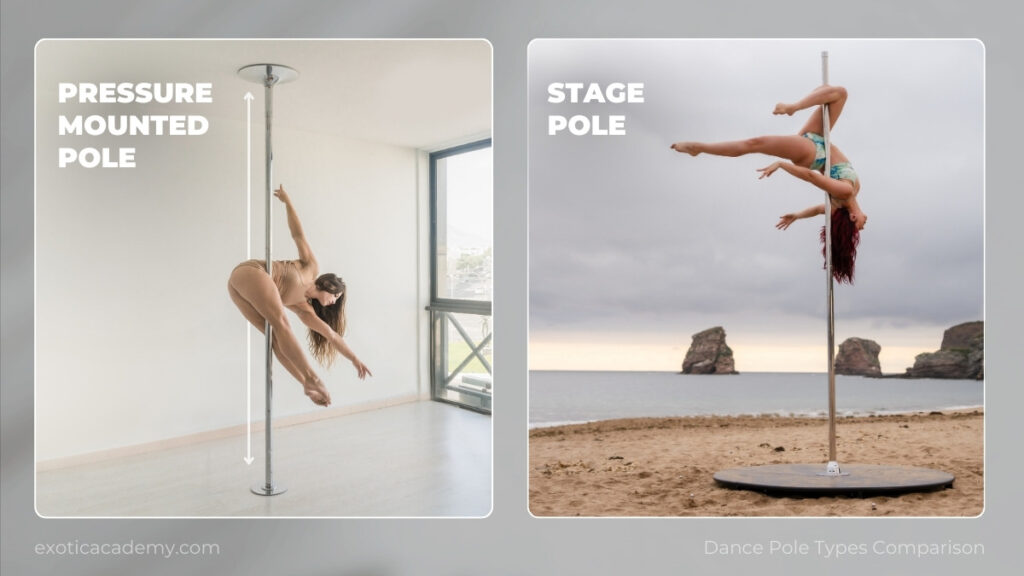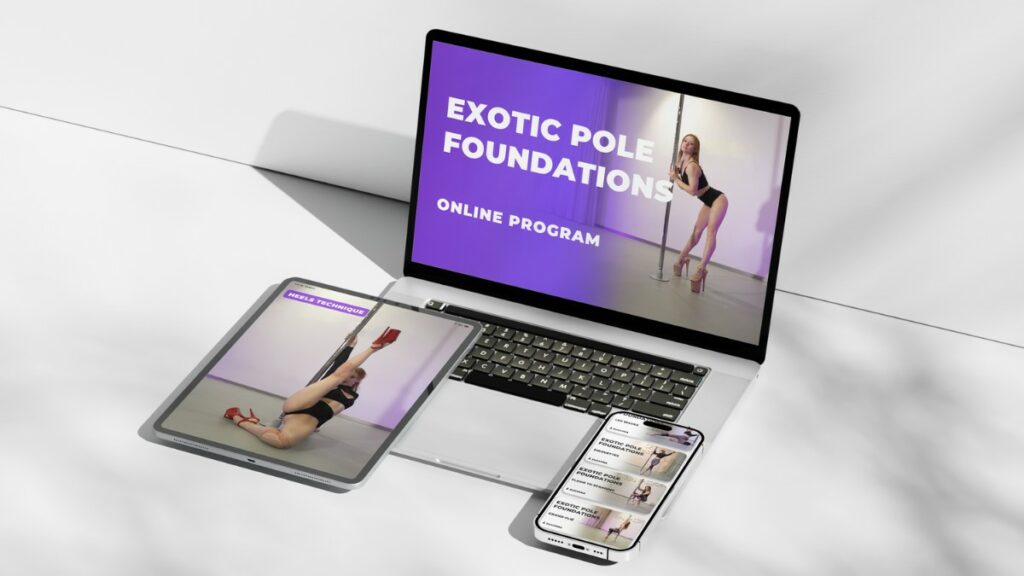
How To Choose The Best Dance Pole For You
So, you’re ready to bring the studio vibes home? Hell yes. Buying a dance pole for home is one of the best decisions you can make if you’re serious about levelling up your pole skills, getting in a killer workout, or just living your best sultry-life fantasy. But if you’re anything like most people, you might be staring into the Google void wondering: Which pole should I get for home? Will it destroy my ceiling? Do I need a drill? And what the hell is a spinning pole?!
Breathe, babe. We got you.
What Types of Dance Poles Are There?
Before we get into finishes, brands, and setup tips, let’s talk about the three main types of dance poles you’ll find for home use. Choosing the right one depends on your ceiling, space, and how portable you need your pole to be.
1. Pressure-Mounted Poles (Removable / Tension Poles)
These are by far the most common for home use—and for good reason. They use tension between the floor and ceiling to stay in place, so no drilling or permanent installation is needed. You’ll typically secure them using a hex key, and they can be taken down or moved easily when needed.
✅ Pros:
- Great for renters or shared spaces
- Easy to install and remove
- No ceiling damage
- Most models now come with both static & spinning modes
⚠️ Cons:
- Only works with solid ceilings (concrete or ones with sturdy beams)
- Can leave slight marks or dust rings over time
- Requires checking stability before use
⚡ Important: If you have a drop ceiling or “fake” ceiling (where there’s a gap between the visible ceiling and the structural one), pressure-mounted poles are not safe. You’ll need a stage pole instead.
2. Permanently Fixed Dance Poles (Screw-In / Ceiling-Mounted Poles)
These are securely drilled into the ceiling and/or floor, making them ultra-stable and reliable—especially for heavy use or advanced tricks.
✅ Pros:
- Extremely stable (great for intense tricks and climbs)
- Clean, sleek look
- Can be used in studios or permanent home setups
⚠️ Cons:
- Requires drilling and permanent fixtures
- Not ideal for renters
- More complex to install and uninstall
Use this type only if you own your space and plan to keep the pole up 24/7.
3. Stage Poles (Freestanding Poles)
No suitable ceiling? No problem. Stage poles come with their own weighted base and frame, so they don’t rely on the ceiling at all. These are often used outdoors, in performances, or in spaces where tension poles just aren’t an option.
✅ Pros:
- No ceiling or floor requirements
- Portable and freestanding—use it anywhere
- Ideal for high ceilings or venues
- Some models work outdoors
⚠️ Cons:
- Takes up more space (base is large)
- Heavier and more expensive
- Slightly different feel due as the pole can wobble a little under your weight (it’s safe, can just feel strange at the beginning)
If your ceiling is too high, slanted, fragile, or not structurally sound, stage poles are the way to go.

So… Which Dance Pole Should You Get?
- Most people go with a removable pressure-mounted pole—especially for home use. It gives you flexibility without damaging your space.
- If your ceiling structure is questionable, opt for a stage pole.
- If you have a dedicated studio space or you’re installing a home dance room, a permanent fixed pole might make sense.
Pole Size & Finish – Not All Metal Is Created Equal
Pole diameter matters more than you’d think. The standard size is 45mm, and for good reason—it’s what most studios use and works for the majority of hand sizes. If you’ve got smaller hands, you might go for 40mm. Sometimes, you can find 42mm poles, which are great in-between solutions. The old-school 50mm is a bit harder to grip and is mostly used in older studio or club setups.
When it comes to finish, your grip (and skin) will be the deciding factor. Chrome is the most common—affordable with decent grip, though it can be slippery if you sweat a lot. Stainless steel is hypoallergenic and slightly slicker, making it better for those with sensitive skin. If you’re a sweaty queen or need that extra stick, powder-coated or silicone poles are ultra-grippy (even with clothing), though they may take some getting used to.

Static vs Spinning Dance Pole – What’s the Difference?
Ah yes, the most common and very important question. Static poles stay in place—no movement, just pure muscle and control. Spinning poles, on the other hand, rotate with you, adding that mesmerizing, floaty, aerial vibe. (Mind-blowing, we know.)
Most beginners start on static mode—and for good reason. It’s the best way to build foundational strength, develop grip control, and really nail your technique. You’ll learn to generate your own momentum and finesse every move without relying on the spin. Plus, spinning can be a bit much when you’re still figuring out how to hold on without sliding off like a confused koala.
Once you’re confident on static, spinning mode is where the magic (and a lot of fun!) happens. A small push sends the pole twirling, and you’re suddenly flying through the air like a glittery tornado of power and grace. It looks dreamy—and it is—but it also takes control to manage the speed and flow. That’s why we love using both.
Luckily, most high-quality poles these days let you switch between modes with just a quick adjustment and a hex key—no drills or handyman needed.
Bottom line? Get a pole with both static and spinning modes. Unless you’re 100% sure you’ll never want to spin (spoiler: you probably will), it’s worth the few extra bucks. Trust us—you don’t want to fall in love with spinning mode later and be stuck with a pole that won’t budge.
How to Choose the Right Pole – Step-by-Step Buying Checklist
Let’s break it down. Buying a dance pole might feel overwhelming, but when you follow this checklist, it becomes a whole lot simpler—and even kinda fun:
- Measure your ceiling height (twice, just to be sure). Most poles are adjustable, but you’ll need an extension if your ceiling is particularly high.
- Check your ceiling and floor stability. You want flat, solid surfaces—avoid sloped ceilings or crumbly drywall.
- Identify your ceiling type. Concrete ceilings are perfect. But if you have a false ceiling or suspended drop ceiling (you know, where there’s a hollow space between the actual structure and the visible ceiling), tension poles won’t work. In that case, your only option is a stage pole.
- Locate beams if your ceiling isn’t solid. Use a stud finder (they’re cheap and easy to find online) to locate structural beams that can handle pressure. You can also knock on the ceiling—hollow sounds = no-go. Solid thud = likely a beam. If you’re unsure, consult a contractor or handyman.
- Decide between removable or permanent installation. Removable tension poles are perfect for renters and commitment-phobes.
- Choose between static or dual-mode (static + spinning) for ultimate flexibility.
- Pick a diameter. 45mm is the standard in most studios and great for most hand sizes.
- Select a finish. Chrome is affordable and grippy. Stainless steel is hypoallergenic. Powder-coated or silicone = ultimate grip.
- Think about your space. You’ll need about 2 meters of clearance all around.
- Compare top brands. (Scroll down for our Lupit vs X-Pole breakdown.)
- Double-check the measurement charts to order the correct size (and if needed, extensions).
- optional: Plan your flooring and lighting. Yes, ambiance matters.
- Look at return policies and warranties. Just in case.
What Dance Pole Brands Are Out There? A Quick Overview
Top Contenders: X-Pole and Lupit Pole
When it comes to buying the best dance pole for home, the final showdown often comes down to Lupit vs X-Pole. Both are industry leaders, but each has its own strengths.
Lupit Pole is known for its sleek design and buttery-smooth spin. It’s incredibly beginner-friendly, easy to install (even solo). It comes in multiple finishes, including stainless steel and powder-coated for maximum grip, making it ideal for slippery hands or sensitive skin. Bonus? It’s gorgeous. Sleek European engineering at its best.
👉 Hot tip: We’ve got a sweet deal for you—use code EXOTIC10 for 10% off Lupit Pole directly on their website.
X-Pole has been a trusted name in the pole community for years, making it a true studio staple. Known for its solid construction and versatility, it’s used by professionals worldwide. With a wide range of models and finishes to choose from, you’re sure to find the perfect fit for your needs.
👉Here is the link to the 🇺🇸 X-Pole US Store &🇬🇧 X-Pole UK Store
So which should you pick? Both Lupit and X-Pole are excellent brands, so it really comes down to your personal preferences .
Other Options Exist—But Beware of Unsafe Knock-Offs
There are also smaller or locally-based manufacturers, like Pole4You, Sun Pole or M-Pole, which can be good alternatives—but it’s important to do your research, check reviews, and make sure they meet safety standards before committing.
Be cautious of suspiciously cheap poles or knock-off brands often found on marketplace sites. If a deal seems too good to be true, it probably is. These poles can be extremely unsafe, putting you at serious risk of injury. Safety should always come first—your pole is your one big investment and the foundation of your training. A high-quality, original pole from a reputable brand will not only serve you well for years but can also be easily resold if needed.
Pole Room Setup Tips: Make Space for the Sass
Your pole deserves more than a sad corner in a dim room. The right setup can seriously elevate your training and make your practice space feel like a mini studio.
Let’s start with the floor—yes, it’s that important. Especially if you’re dancing in heels, you’ll ideally want a smooth surface like PVC panels, laminate, or hardwood. These allow for slides, glides, and all that dramatic sass without catching your platform. But if you’re currently working with tile or carpet, don’t stress—it’s absolutely possible to train on them too. Tiles aren’t the coziest (cold and hard on the knees), so keep knee pads handy. Carpet, while decent for pole fitness or barefoot training, might hold you back during slinky floorwork or make dancing in heels trickier. That said, you can still get creative with your setup and upgrade later if needed.
You will need a mirror or two to watch your technique and make sure you’re slaying from every angle. And don’t forget to leave enough space around the pole—ideally 2 meters on all sides—to avoid crashing into furniture mid-spin. Lighting also makes a difference; some colourful LEDs will add a bit of flair!
And for our renters out there—listen up. If you’re worried about subtle marks on your pristine white ceiling, here’s a pro tip: place a thin sheet of paper or cardboard between the top pole plate and the ceiling. The rubber on the plate tends to collect dust over time, which can leave an annoying ring. A small barrier goes a long way in keeping things clean (and landlord-friendly).

What About Pole Installation?
Spoiler: It’s not as scary as it sounds. Most modern home poles are removable and pressure-mounted, meaning no drilling, no damage, and no tools beyond a hex key. Installation usually takes around 15 to 20 minutes, even if you’re solo. Just follow the instructions carefully, check your measurements, and always double-check stability before trying that upside-down spin.
Learn from Home Like a Pro
Getting your home dance pole is only half the journey—the real magic happens when you start using it. And the truth is, you don’t need a fancy studio to become a pro. With online tutorials, you can learn from world-class instructors without leaving your living room.
If you’re into exotic or heels dance, Exotic Academy is basically your new BFF. It’s packed with step-by-step lessons for all levels, from absolute beginners who don’t know a bevel from a body wave, to advanced dancers refining their flow, tricks, and floorwork. Plus, you can learn at your own pace, replay the lessons as many times as you need, and train whenever it fits your schedule (midnight floorwork, anyone?).
Whether you’re building your confidence, mastering choreography, or learning new tricks, having access to a full library of tutorials means you never have to wonder what to practice next. You can even follow themed programs and improve specific skills week by week.
Seriously—if you’re going to buy a home pole, pair it with quality instruction. Your bruises (and progress) will thank you.

Final Thoughts: Your Home, Your Studio
Bringing a pole into your home is more than just a purchase—it’s an invitation to movement, strength, creativity, and confidence. Whether you’re spinning in heels, building grip strength, or trying your first climb, the right pole will be your most supportive dance partner (literally).
So skip the no-name Amazon deals, invest in a high-quality brand like Lupit or X-Pole, and create a training space you’ll love. Trust us, once it’s up, you’ll wonder how you ever lived without it.
Ready to train like a queen? We’ve got beginner-friendly tutorials, exotic combos, and full training programs waiting for you inside Exotic Academy. Come spin with us.

Sign in to comment!